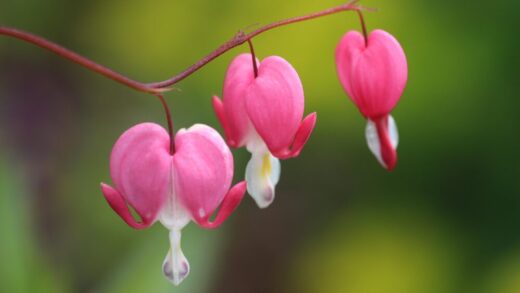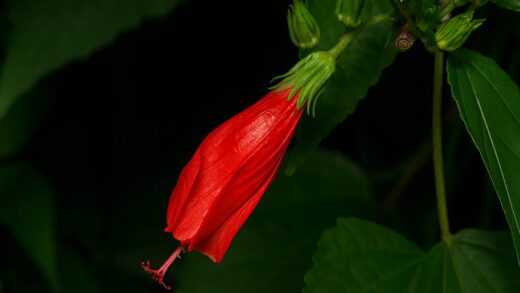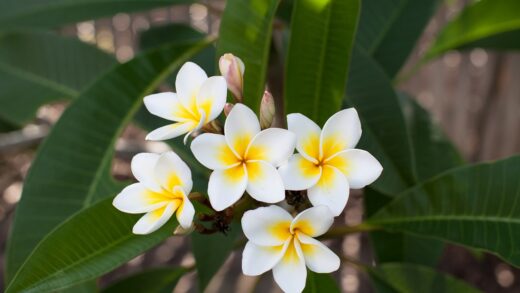Implementing a proper pruning and cutting back regimen is a simple yet highly effective way to maintain the health, vigor, and aesthetic appeal of the Balkan bellflower. This resilient groundcover does not require complex or intensive pruning, but a few timely trims throughout the growing season can make a significant difference in its overall performance. The primary goals of pruning this plant are to encourage continuous and repeat blooming, to maintain a tidy and compact shape, and to rejuvenate the foliage after the main flowering flush. By understanding the straightforward techniques of deadheading and shearing, gardeners can easily keep this charming perennial looking its best from spring through to autumn, ensuring it remains a dense, floriferous, and attractive feature in the garden.
The most frequent and ongoing pruning task associated with the Balkan bellflower is deadheading. This is the simple practice of removing the individual flowers as soon as they begin to fade and wither. By snipping off these spent blooms, you prevent the plant from directing its energy towards producing seeds. Instead, that energy is redirected into creating new buds and flowers, which can dramatically extend the blooming period. A plant that is regularly deadheaded will often continue to flower sporadically throughout the summer, long after its initial spectacular flush has passed. This small effort yields a great reward in the form of a longer-lasting floral display.
For a plant with as many small flowers as the Balkan bellflower, removing each one individually can seem daunting. While precise deadheading with small snips is effective, a much quicker method for a large, sprawling plant is to give it a light shearing. Once a significant number of flowers on a section have faded, you can simply use a pair of garden shears or scissors to trim off the top layer of spent flower stems. This not only removes the old flowers but also neatens the plant’s overall appearance in one efficient action.
This regular removal of old flowers serves another important purpose: it prevents unwanted self-seeding. The Balkan bellflower can spread readily by seed in some garden environments. While this may be desirable in some situations where you want it to naturalize, in a more formal border or a small rock garden, it can become a nuisance. Consistent deadheading or light shearing before the seed pods have a chance to mature and disperse is an effective way to control its spread and keep the plant contained within its designated area.
The benefits of shearing after flowering
A more substantial pruning, often referred to as shearing or cutting back, is highly beneficial for the Balkan bellflower and is typically performed after the main, most prolific wave of flowers has concluded, usually in mid-summer. This process involves cutting the entire plant back by approximately one-third to one-half of its height. While this may seem drastic, and will leave the plant looking rather bare for a short period, it is an essential technique for rejuvenating the plant and encouraging a second flush of growth and blooms.
More articles on this topic
The primary benefit of this mid-season “haircut” is the stimulation of fresh, new growth. After flowering, the plant’s foliage can often look tired, leggy, and a bit ragged. Shearing away all this old growth encourages the plant to produce a new mound of dense, compact, and vibrant green leaves from its base. This new foliage provides a much more attractive appearance for the remainder of the growing season compared to the tired look of the post-flowering stems.
This rejuvenation pruning is also the most effective way to encourage a rebloom. After being cut back, the plant will often respond by producing a second, albeit usually less spectacular, flush of flowers in the late summer or early autumn. This second bloom extends the plant’s season of interest and provides another welcome splash of color as other summer flowers may be starting to fade. To support this new growth and flowering, it is a good idea to water the plant well after shearing and perhaps provide a light application of a balanced liquid fertilizer.
Furthermore, this shearing process plays a role in disease prevention. The dense mat of foliage that the Balkan bellflower creates can sometimes impede air circulation, especially in the center of the plant. This can create a humid microclimate that is conducive to fungal diseases like powdery mildew. Cutting the plant back opens it up, allowing air to circulate more freely through the crown, which helps to keep the foliage dry and healthy. It is a proactive step that contributes to the plant’s overall long-term well-being.
Pruning to control spread
The Balkan bellflower is a vigorous and enthusiastic grower, spreading by shallow rhizomes to form a wide, dense mat. While this spreading habit is one of its most desirable qualities when used as a groundcover, there are times when its growth needs to be managed to prevent it from overwhelming neighboring plants or spilling out of its designated area. Pruning is an effective and straightforward tool for controlling the plant’s size and spread.
More articles on this topic
Throughout the growing season, you can use a sharp spade or a pair of lawn edging shears to maintain a clean boundary around your Balkan bellflower patch. Simply cut down into the soil along the desired edge to sever the spreading rhizomes. The unwanted sections on the outside of the line can then be easily pulled up and removed. This is best done on a regular basis, perhaps once or twice during the summer, as it is much easier to remove small encroachments than to reclaim a large area that has been overtaken.
The pieces that are removed during this edging process do not need to be discarded. As long as they have a section of root attached, they are essentially new plants and can be used to propagate the bellflower elsewhere in your garden. This is an easy way to get new plants for free and to spread this beautiful groundcover to other areas where its vigorous growth will be appreciated. Simply replant the removed sections in a prepared spot and water them in well until they become established.
In addition to root pruning at the edges, you can also control the plant’s spread by managing its tendency to self-seed. As mentioned, diligent deadheading or shearing after flowering will prevent the formation of viable seeds, thus stopping the plant from popping up in unintended places. This is particularly important in gravel gardens or between paving stones where seedlings can be difficult to remove. By combining boundary control with the prevention of self-seeding, you can enjoy the beauty of the Balkan bellflower without it becoming an unruly garden thug.
Autumn and spring cleanup
As the growing season comes to a close in the autumn, a final bit of pruning or tidying up may be in order. After the first hard frosts have caused the top growth to die back, you have the option to cut the plant back hard, leaving just an inch or two of stems above the ground. This gives the garden a clean and tidy look for the winter months and removes any dead foliage that could potentially harbor pests or diseases. This is purely an aesthetic choice and is not strictly necessary for the plant’s health.
Alternatively, many gardeners prefer to leave the faded foliage in place over the winter. The dead leaves and stems can provide a small degree of natural insulation for the plant’s crown, protecting it from winter winds and cold. Furthermore, this top growth can be very effective at trapping snow, which is one of the best natural insulators for perennial plants. If you choose this approach, the cleanup is simply postponed until the early spring.
The early spring cleanup is a crucial task regardless of whether you cut the plant back in the autumn. Just as the first signs of new growth begin to emerge from the base of the plant, it is time to remove all of the old, dead stems and leaves from the previous year. This can be done with shears or by hand. This cleanup is important for several reasons: it allows sunlight to reach the new shoots, it improves air circulation around the crown to prevent rot and disease, and it gives the plant a clean start for the new season.
During this spring cleanup, it is also a good opportunity to inspect the plant’s crown and to remove any weeds that may have established themselves within the clump. It is a time of renewal in the garden, and giving your Balkan bellflower this attention ensures that it will have the best possible conditions to put on another spectacular display. This simple act of removing the old to make way for the new is a fundamental part of the annual cycle of perennial gardening.
Pruning for propagation
Pruning activities can also be directly linked to the propagation of the Balkan bellflower. The plant is very easy to propagate from cuttings, and the ideal material for these cuttings often comes from the new growth stimulated by an earlier pruning or shearing. The soft, vigorous, non-flowering shoots that emerge after the plant has been cut back are perfect for taking basal cuttings. These cuttings tend to root quickly and reliably, providing an easy way to create many new plants.
To take a cutting, select a healthy shoot of about three to four inches in length. Use a sharp, clean knife to take the cutting from the base of the plant. Remove the lower leaves, dip the cut end in rooting hormone if desired, and insert it into a pot of moist, well-draining rooting medium. By timing your propagation efforts to coincide with the flush of new growth after a mid-season shear, you maximize your chances of success.
The act of division, another primary method of propagation, is also a form of pruning. When a clump becomes very large, congested, or perhaps less vigorous in its center, lifting and dividing it is an excellent way to rejuvenate the plant. This process involves cutting the clump into smaller pieces, each with a healthy set of roots and shoots. The less vigorous central part can be discarded, while the healthy outer sections can be replanted. This not only gives you new plants but also ensures the original patch remains vibrant and healthy.
This division is best done in the spring or early autumn. It is a more substantial form of pruning that effectively resets the plant. By regularly dividing your Balkan bellflower every three to four years, you can manage its size, improve its overall health and flowering performance, and continuously produce new plants to expand your garden or share with fellow gardeners. In this way, pruning and propagation become two sides of the same coin, working together to maintain a beautiful and productive garden.

















